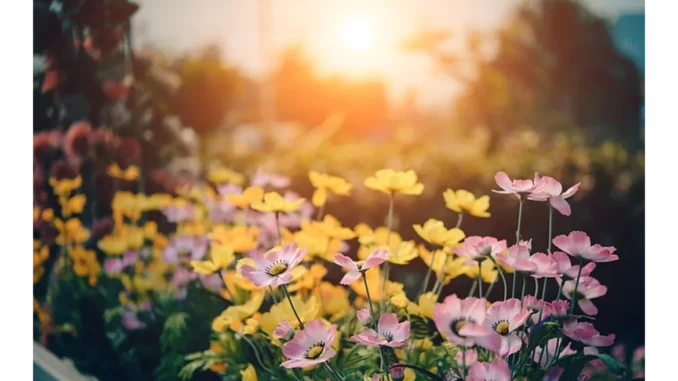
The Art of Designing a Low-Maintenance Garden: Tips and Tricks for Effortless Elegance
Turn your garden into your private retreat, enjoyable day or night complements of Elegancia.homes.
In today’s bustling world, the allure of a serene garden retreat is undeniable, yet the demands of upkeep often deter many aspiring gardeners. Enter the concept of the low-maintenance garden—a sanctuary where exquisite beauty meets practical simplicity. By embracing strategic design principles and making informed plant selections, you can cultivate a garden that exudes charm with minimal intervention, offering a verdant haven that invites both relaxation and ecological harmony.
The Importance of Planning
The foundation of any successful low-maintenance garden lies in meticulous planning. Before embarking on your gardening journey, it’s essential to thoroughly assess your garden’s unique characteristics, such as soil composition, sunlight exposure, and drainage capabilities. This understanding is pivotal in guiding your selection of plants and layout, ensuring that each component thrives naturally within its environment.
Contemplate the primary functions you envision for your garden. Is it a lively space for entertainment, a tranquil retreat, or a vibrant ecosystem for local wildlife? Clarifying these objectives will help you prioritise features and allocate space efficiently.
Hardscaping and Structural Elements
Integrating hardscape elements is a key strategy in minimising garden maintenance. Patios, pathways, and raised beds impart structure and aesthetic appeal while reducing areas that demand frequent care. Durable materials such as stone, gravel, or composite decking offer longevity with minimal upkeep, standing as a testament to timeless elegance.
When designing pathways, choose materials that harmonise with your garden’s overall aesthetic. Porcelain paving provides a sleek, modern appearance while being easy to maintain. Paths should be wide enough to allow comfortable navigation, and consider including seating areas or focal points to enhance the garden’s allure.
Choosing the Right Plants
Selecting the appropriate plants is crucial in crafting a low-maintenance landscape. Opt for hardy perennials, shrubs, and ornamental grasses that are well-suited to your local climate and soil conditions. These plants generally demand less water, pruning, and pest management, making them ideal for a low-effort garden.
Succulents and cacti, with their distinctive forms and textures, are perfect for those seeking minimal watering requirements. These resilient plants can be seamlessly integrated into rock gardens or container arrangements, adding interest with ease.
Consider plant growth habits and mature sizes when making selections. Slow-growing varieties require less frequent pruning, while compact forms can eliminate the need for additional support or staking.
Efficient Watering Solutions
Watering is often the most labour-intensive aspect of garden care. To simplify this task, invest in an efficient irrigation system, such as drip irrigation or soaker hoses. These systems deliver water directly to the roots, minimising waste and maintaining consistent moisture levels.
Incorporate mulch into garden beds to conserve soil moisture and suppress weeds. Organic mulches like bark or straw not only preserve water but also enrich soil health as they degrade, providing valuable nutrients to your plants.
Enhancing Biodiversity
A low-maintenance garden can still be a sanctuary for wildlife. By integrating native plants and fostering diverse habitats, you can attract beneficial insects, birds, and other creatures. Consider adding elements such as birdbaths, insect hotels, or small ponds to encourage local biodiversity.
Eschew chemical pesticides and fertilisers, which can harm non-target species and disrupt ecological balance. Instead, explore natural pest control methods, such as companion planting or introducing beneficial predators, to maintain a thriving garden ecosystem.
Designing a low-maintenance garden is an art form that marries beauty with practicality. Through careful planning, astute plant selection, and efficient maintenance strategies, you can create a garden that enriches your outdoor space without overwhelming your schedule. Whether you are a seasoned horticulturist or a beginner, these insights will guide you in cultivating a serene and sustainable garden that offers year-round enjoyment.


Be the first to comment